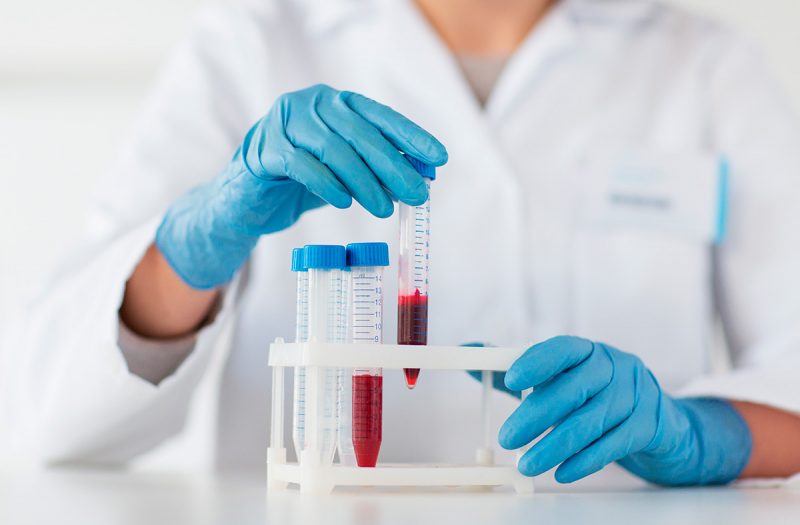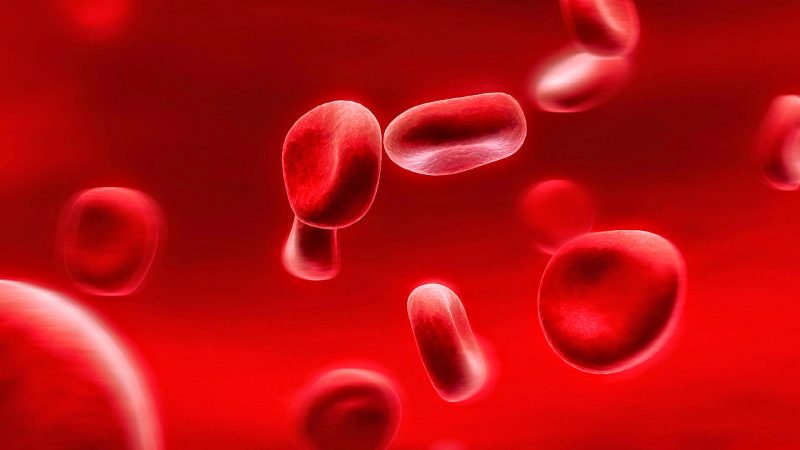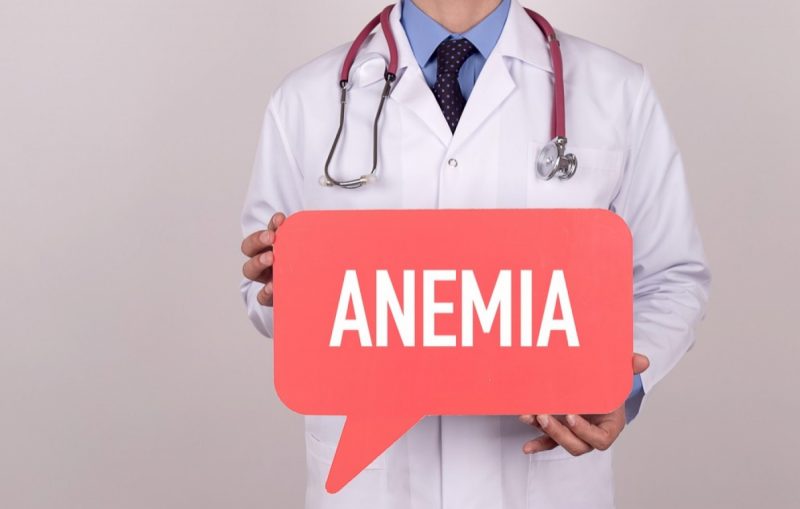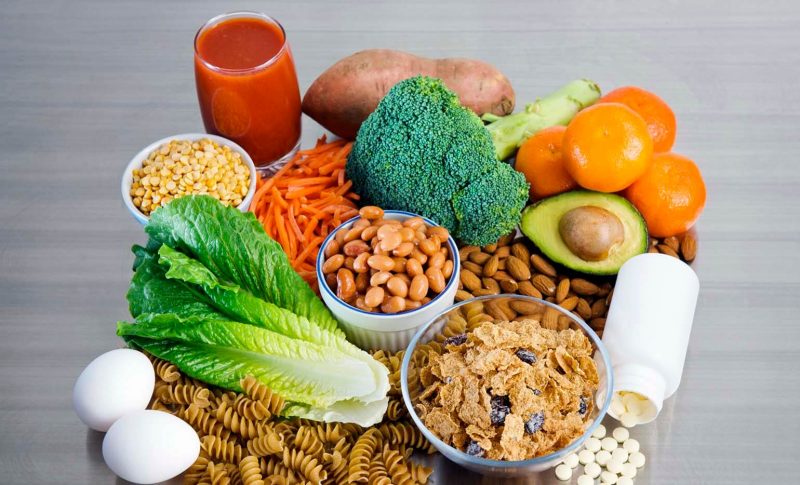Do acquaintances and friends at a meeting vying advise you to sleep or go on vacation, go jogging in the park or drink vitamins with dietary supplements? “Yes, they are right,” say yourself, feeling a breakdown in strength and mood already in the morning; own reflection in the mirror does not please, digestion is not okay, one cannot climb to the fifth floor without shortness of breath! There are many explanations for such problems, but one of them is simple and understandable - folic acid deficiency anemia or simply a consequence of the banal lack of one of the most important vitamins of group B.
Material Content:
Disease characteristics
In conditions of a deficiency of certain B vitamins, a person may develop megaloblastic anemia. At the same time, the synthesis of red blood cells is impaired, so “broken” precursors of these cells, megaloblasts, accumulate in the bone marrow.
All these disorders of the hematopoiesis process are associated with a lack of B12 and folic acid (vitamin B9). It happens that B12 is enough, and a deficiency of only vitamin B9 is manifested. In this case, folic deficiency anemia occurs. This disease threatens the well-being of many human organs and systems, so some countries have already taken the path of additional enrichment of products with folic acid.
Strictly speaking, folic acid is a vitamin B9 synthesized by chemists, which in the human body breaks down to folate, a group of compounds that are naturally present in plant foods. More precisely, before methyltetrahydrofolates (mainly 5-MTHF).It is in this form that they actively participate in the processes of hematopoiesis, the cellular structure, is an important part of cerebrospinal fluid, are indispensable in the transfer of gene information to new cells, and support the work of the hormonal and digestive systems.
I must say that folic acid is best absorbed by the body in conditions of sufficient vitamin B12. Therefore, there is a thin line between B12-deficient anemia (or pernicious anemia) and folic acid deficiency, although the former is more common in the latter. Often, these diseases are diagnosed together, or even in combination with iron deficiency anemia.
Causes of Folic Deficiency Anemia
A person receives this vitamin necessary for life and health from two sources: with food and from the intestine, where his own microflora synthesizes it. The word "folic" comes from the Latin "folium", which translates as "leaf". From the name it is clear that green leaves are especially rich in these compounds. In plant food, this substance is unstable and quickly destroyed by sunlight, prolonged storage, elevated temperature, exposure to air and even cutting with a knife. In addition, this water-soluble vitamin does not accumulate in the body.
Three main causes of the onset of the disease follow from this:
- Lack of vitamin intake with food. If your diet has virtually no raw leafy greens, avocados, broccoli and Brussels sprouts, liver, nuts and legumes (especially peanuts and lentils), then you are most likely to have a vitamin B9 deficiency. It is especially important that there is all this necessary in raw form (which is very difficult with liver and legumes), and maximum preservation in food products is achieved by a short shelf life and minimal processing.
- Violations of the digestive tract, in particular the intestines. This can indicate both poor absorption of nutrients and a disturbed synthesis of this vitamin in the intestine. Only healthy microflora can sufficiently compensate for the lack of folate. Parasites that live in the intestines also significantly reduce vitamin levels.
- The increased consumption of vitamin that occurs during pregnancy and breastfeeding, during active growth, recovery from severe and long-term illnesses, with alcohol or drug addiction, taking certain medications. Hemodialysis removes folate from the body, and taking certain antibiotics reduces absorption from food. Tumors, especially malignant ones, also consume a lot of vitamin B9.
Symptoms of a lack of vitamins B12 and B9
With a lack of these two vitamins, many classic symptoms of anemia are observed, and hemoglobin levels are lowered in the blood. Gastrointestinal problems and neurological manifestations are also characteristic of such patients.
In children
Children's age is a period of active growth and development of all body systems. For the formation of tissues, building material and energy reserves are needed. An important role in this process is played by vitamins B9 and B12. With their lack of a child at a slower pace than it should be by age, height and weight increase. There are also problems with bleeding gums, frequent stomatitis. The protective functions are reduced, so it easily gets sick with respiratory infections. Other symptoms include fatigue and poor concentration, problems with stool. Deficiency of cobalamins is also manifested by tearfulness, pain in the stomach.
Folic acid deficiency anemia in young children can develop if you switch from breastfeeding not to a mixture, but to food based on goat's milk. In special mixtures and cow's milk there are enough folates in an easily digestible form, but in goat they are almost absent.
In adults
Adults who are not at risk are less likely to develop diseases associated with a lack of vitamins.However, in our country, the population has a general deficiency of B vitamins. This is due to the nutrition culture, a small amount of fresh plant food in the diet, forced long-term storage of vegetables during the cold season. Symptoms of a lack of cobalamin (B12) and folate are most pronounced in older people. Among the most common are the following: increased pallor of the skin due to anemia and low blood pressure, pain in the stomach due to a decrease in the acidity of the juice, frequent infections, numbness in the limbs, poor sleep and loss of strength.
In pregnant
A deficiency of B vitamins is especially dangerous for women expecting a baby. These substances are necessary for the creation of new cells; they are directly involved in the replication of RNA and DNA. And this means that with B9 and B12-deficient anemia, a pregnant woman does not have enough building material to create a new organism. This is fraught with serious pathologies of fetal development and problems with the cardiovascular, nervous, digestive and other systems of the mother herself. Lack of vitamins B can lead to miscarriage, premature birth.
At the same time, in pregnant women, the symptoms of shortage appear faster than other categories of patients. Women feel causeless fatigue, lethargy and irritability, sleep disturbances. There may be pulling pains in the lower abdomen, tingling in the arms and legs, frequent colds, lower pressure than usual. In the blood test, hemoglobin is reduced. Throughout pregnancy and during breastfeeding, folic acid must be additionally taken. Studies have proven that this measure significantly reduces the risks associated with fetal malformations.
Diagnostic Methods
The main method of diagnosis is a blood test - general and biochemical parameters. The first will reveal the level of red blood cells, white blood cells, hemoglobin, platelets and reticulocytes. According to these indicators, the degree of development of anemia in the patient is determined. Blood biochemistry is done to identify abnormalities in the functioning of the stomach, small intestine, pancreas and liver. The deficiency of B vitamins is directly reflected in the functions of these organs, moreover, the digestibility of corrective drugs will depend on their work.
In some cases, if differential diagnosis of various types of megaloblastic anemia is required, separate blood tests are prescribed for levels B9 and B12. They allow you to find out what exactly the body lacks. But these types of analyzes are quite expensive, and not every laboratory makes them. You can also do an analysis on the level of homocysteine, which increases in conditions of folic acid deficiency.
Treatment of folic acid deficiency anemia
The main method of treatment is the appointment of folic acid in the calculated dosage, i.e. it is selected by the doctor depending on gender, age, related conditions and diseases, as well as other factors. Almost always, it is prescribed simultaneously with vitamin B12, which helps break down and absorb the drug in the intestines.
On average, an adult needs about 200 mcg of the drug per day, when planning pregnancy, and while waiting for the child, the dosage increases 2 times. Children, depending on age, need vitamin B9 intake per day from 25 to 150 mcg.
Prevention of Vitamin B12 and B9 Deficiency
The best prevention of folate deficiency is a balanced diet with a high content of fresh vegetables:
- lettuce of various types;
- parsley;
- cilantro;
- spinach
- carrots;
- beets;
- avocado;
- peas.
In addition, foods rich in vitamin B9 are:
- yeast;
- peanut;
- nuts and seeds;
- lentils and beans;
- fresh cow's milk;
- cereals;
- meat;
- tuna and salmon.
It is important to cook these products in a gentle way, under the lid. About half of the folate is lost during cooking, and only about 50% is absorbed from the remaining amount.
There are different opinions as to which form is best absorbed by vitamin B9. For many years, it was believed that artificially created folic acid is more suitable for improving health than in its natural form. But in recent years, scientists in several European countries have come to the conclusion that an excess of folic acid does not break down, accumulating in the body and causing undesirable effects. While tetrahydrofolates immediately go into business.




















